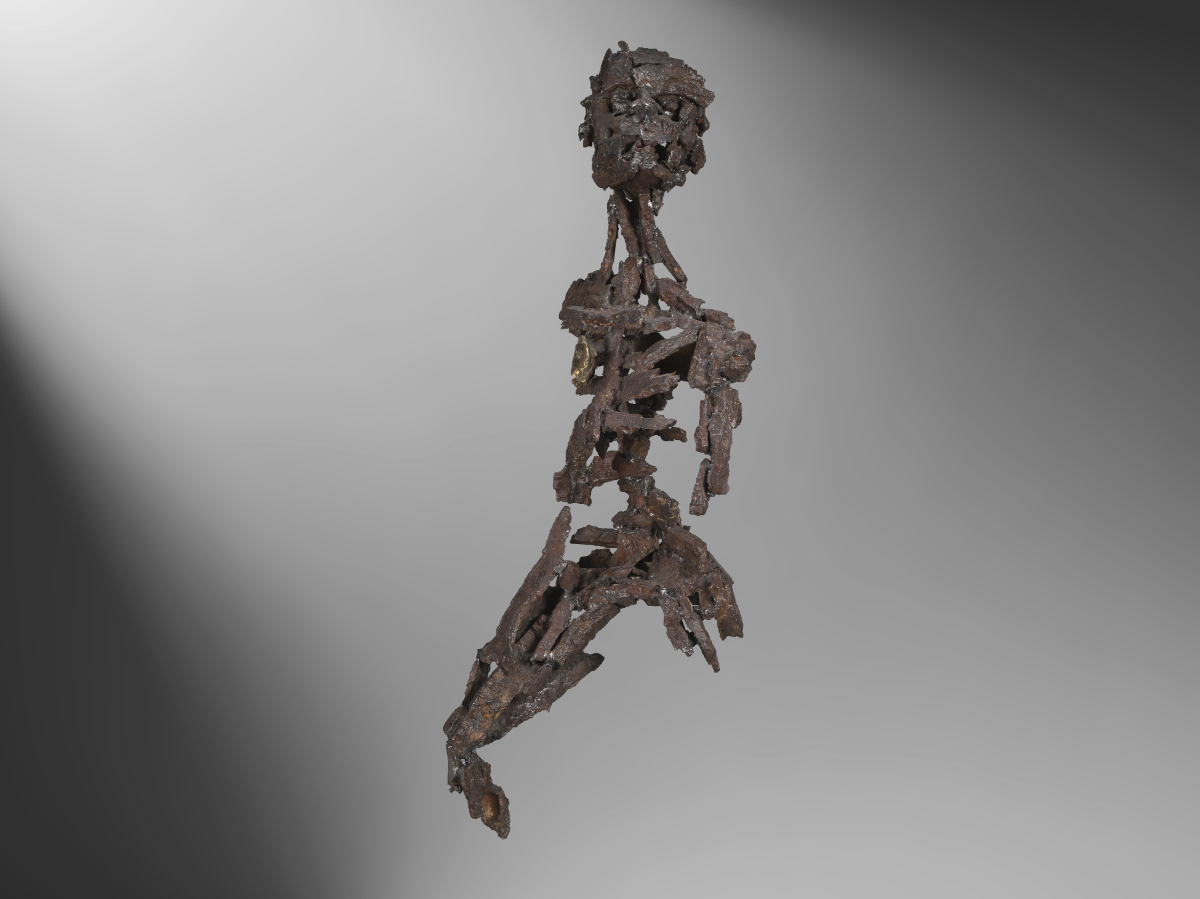Patrick Lamouroux
« Shrapnell »


Patrick Lamouroux
« Shrapnell »
Série : « L’ombre des âmes éparses »
Eclats d’obus de la bataille de Verdun (1916) assemblés – 2017 – 88 cm de haut
Signature « PAT » sur un sceau métallique soudé sur le socle
Provenance : atelier de l'artiste
Series : « L’ombre des âmes éparses »
Shrapnel shards of the battle of Verdun (1916) assembled – 2017 – 88 cm high
Signed "PAT" on a metal seal welded upon the base
Origin : artist's studio
Informations connexes :
Autres vues :
Le mot du marchand :
La bataille de Verdun en 1916 c’est 300 jours de combat, nuit et jour. C’est également 250.000 morts et disparus. Verdun c’est aussi une bataille où l’artillerie a causé 80% des pertes avec 53 millions d’obus tirés, soit 6 par m² de terrain. Le rayon « opérationnel » d’un obus qui éclate étant de plusieurs dizaines de mètres on imagine sans peine la densité de « l’arrosage » du sol en débris métalliques. 100 ans plus tard la terre recrache toujours cette overdose d’acier. Les labours, l’érosion font remonter du fer qui a subi de telles contraintes de pression et de température au moment de l’explosion qu’il en est devenu presque indestructible naturellement. C’est de ce matériau que le métallier et plasticien Patrick Lamouroux a décidé de faire sa matière première. Il le récolte sur place, l’extrait de la gangue que son séjour dans la terre lui a constitué et l’assemble pour lui conférer une nouvelle existence, une nouvelle dynamique. Ces fragments de métal étant étroitement liés à une épouvantable boucherie il les considère comme une sorte de témoins mémoriels et s’interdit de les transformer. Il ne se sent pas autorisé à couper, tordre ou façonner la configuration d’un éclat alors que celui-ci a peut-être blessé, mutilé ou tué. Ayant subi des chocs thermiques et mécaniques démesurés le matériau résiste d’ailleurs à tout traitement. Le soudage par simple fusion est quasi impossible et il faut le plus souvent opérer par ajout de métal pour lier deux pièces.
Word from the merchant :
The Battle of Verdun in 1916 is 300 days of fighting, night and day. It is also 250,000 dead and missing. Verdun is also a battle where the artillery caused 80% of the losses with 53 million shells fired, or 6 per sqm of land. The "operational" radius of a shell that explodes being of several tens of meters one can easily imagine the density with which the soil has been "soaked" by metal debris. 100 years later the ground is still spitting out this overdose of steel. Plowing and erosion bring up iron which underwent so many pressure and temperature constraints at the time of the explosion that it has become almost indestructible naturally. It is from this material that the metal and plastic artist Patrick Lamouroux decided to make his raw material. He harvests it on the spot, extracts it from the gangue that its stay in the soil has built and assembles it to give it a new existence, a new dynamic. These fragments of metal being closely linked to a dreadful butchery he considers them as a sort of memory witnesses and refrains from transforming them. He does not feel entitled to cut, twist, or shape a shard when it may have wounded, mutilated, or killed. Having undergone immoderate thermal and mechanical shocks the material is resistant to any treatment. Welding by simple fusion is almost impossible and it is usually necessary to operate by adding metal to bind two pieces.
Référencement de l'oeuvre en rubriques :
Sculptures bronze
Sculptures matériaux divers
Sculptures matériaux divers
Sculptures pierre
OEuvres de premier rang
Extrêmement rares
Ensembles complets
Art abstrait
Critique politique et sociale
Expressionnisme
Portraits et autoportraits
Très grands formats
GALERIE ANNA-TSCHOPP
NOS ADRESSES UTILES
POUR MARSEILLE
197, rue Paradis
13006 Marseille
+33 (0)7 60 69 19 55
atschopp197@gmail.com
Heures d'ouverture :
jeudis, vendredis, samedis
de 11h00 à 17h30
tous les jours sur RV











